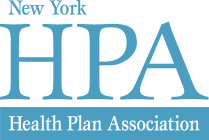Citing a new report on the effects of the Affordable Care Act in New York, the New York Health Plan
Association today renewed its call for reform of the state’s prior approval rate setting process in order to ensure future viability of the exchange and New Yorkers’ access to coverage.
Although the report from Standard & Poor’s found New York, like many other states, has seen a
substantial decrease in the number of uninsured, it raised significant concern over the continued losses
suffered by plans and questioned whether insurance companies can remain on the exchange without
appropriate premium pricing.
“Seventy-five percent of the plans on the NY State of Health exchange reported operating losses in 2014, with losses for the individual market alone totaling more than $160 million,” said Paul Macielak, HPA president and CEO, citing figures in the report. “Plans cannot be expected to continue losing money year after year and remain viable.”
The report pinned some of New York’s losses on problems with federal risk stabilization programs meant to protect insurers from suffering huge losses, a problem impacting insurers across the nation. However, the report also pointed to the impact of New York’s rate regulation process, noting the Department of Financial Services (DFS) frequently using its authority to strike down requested rate increases.
“As we have repeatedly said, DFS has been practicing systemic price suppression over the past several
years, and the suppression is arbitrary, not actuarially based. Today’s report underscores the need for rate setting reforms to ensure adequate premiums moving forward to protect health plans’ financial solvency and, by extension, consumers’ access to care and choice,” Macielak said.
